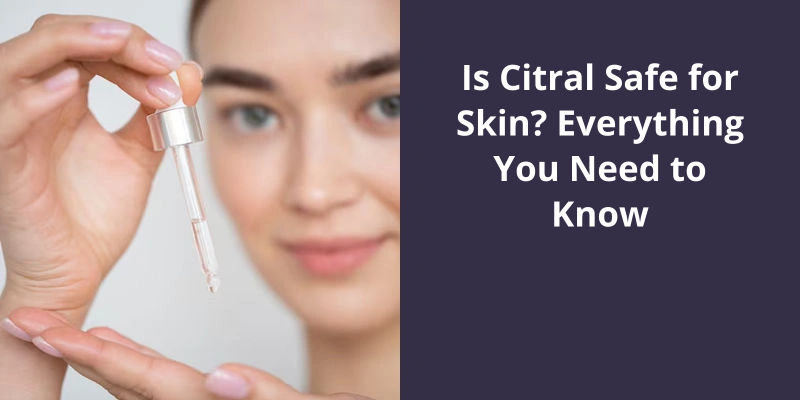No, all glycerine is not the same. Glycerine, also known as glycerol, comes in different forms, primarily vegetable glycerine and animal glycerine. Vegetable glycerine is derived from plant oils like coconut or palm oil and is often used in food and cosmetic products. It’s also a popular choice for vegans. Animal glycerine is made from animal fats and is commonly used in the same types of products, but it’s not suitable for vegans or those preferring plant-based ingredients. While both types have similar properties and uses, the source and processing methods can vary, making them different. It’s always important for consumers to check labels to ensure the type of glycerine is suitable for their specific needs or preferences.

Can I Use Glycerin Instead of Vegetable Glycerin?
Glycerin is a versatile substance that’s many applications in different industries, including food, medicine, and cosmetics. It’s a colorless, odorless, and viscous liquid that’s commonly used as a sweetener, a humectant, and a solvent. Vegetable glycerin is a specific type of glycerin that’s made from plant oils, such as coconut, palm, or soybean, and is often used in food and cosmetic products as a natural alternative to synthetic glycerin, which is made from petrochemicals. However, not all recipes require the use of vegetable glycerin, and natural or synthetic glycerin can be used as a substitute.
When it comes to using glycerin instead of vegetable glycerin in recipes, it’s essential to note that both animal-based and synthetic glycerin can be used in the same amounts as vegetable glycerin and will have the same effect in the recipe.
Animal-based glycerin is made from animal fat, such as tallow or lard, and is commonly used in food products, such as baked goods, candies, and processed foods, as well as in cosmetics and personal care products, such as soaps and lotions. Synthetic glycerin, on the other hand, is made from petrochemicals and is commonly used in industrial and pharmaceutical applications, such as antifreeze, lubricants, and solvents.
One thing to keep in mind when using glycerin in recipes is that it’s a highly concentrated and viscous liquid that can affect the texture and consistency of the final product. Therefore, it’s essential to measure glycerin accurately and use it sparingly, especially in recipes that require a delicate balance of ingredients. Additionally, glycerin can have a slightly sweet taste, so you may need to adjust the amount of other sweeteners in the recipe accordingly.
The Benefits of Using Vegetable Glycerin Over Synthetic or Animal-Based Glycerin
Vegetable glycerin is a healthier and more eco-friendly alternative to synthetic or animal-based glycerin. Unlike other glycerins, vegetable glycerin is all-natural, non-toxic, and biodegradable. It’s derived from plant-based sources and is free from harmful chemicals and additives. Additionally, vegetable glycerin is a great moisturizer for skin, lasts longer, and has a higher viscosity. It’s also a popular ingredient in e-liquids due to it’s low toxicity and mild sweet taste.
It’s important to ensure that the glycerin used in medical and pharmaceutical products is of the highest quality. Fortunately, there are two options available: pharma grade glycerin and ultra high pure glycerin. While pharmaceutical glycerin is commonly used in these industries, ultra high pure glycerin has it’s own unique applications. Let’s explore the differences between these two types of glycerin and why they matter for medical and pharmaceutical purposes.
Is There a Medical Grade Glycerin?
Glycerin, also known as glycerol, is a colorless, odorless, sweet-tasting liquid that’s commonly used in a variety of products, including cosmetics, pharmaceuticals, and food. However, not all glycerin is created equal. In fact, there are different grades of glycerin available, each with it’s own unique properties and uses.
This type of glycerin is highly purified and meets specific standards for quality and purity. Pharma grade glycerin is often used as a humectant to help moisturize and protect the skin, and as a solvent for medications and other active ingredients.
Another type of glycerin is ultra high pure glycerin. This type of glycerin is even more pure than pharma grade glycerin and is often used in food and feed additives. Ultra high pure glycerin can also be used as an intermediate in the production of various chemicals, including propylene glycol, acrolein, and epichlorohydrin.
While both pharma grade glycerin and ultra high pure glycerin are highly purified, they aren’t interchangeable. Each type of glycerin has specific uses and benefits based on it’s purity level and intended application.
Whether you’re looking for a humectant to moisturize dry skin or a high-purity ingredient for use in food or chemical production, there’s a type of glycerin available to meet your needs. Just be sure to choose the right grade and quality to achieve the desired results.
Differences Between Natural and Synthetic Glycerin
- Natural glycerin is derived from natural sources such as vegetable oils and animal fats, while synthetic glycerin is manufactured from propylene or sugar alcohols.
- Natural glycerin is considered to be a higher quality product because it’s pure and doesn’t contain any impurities or additives, while synthetic glycerin may contain impurities and additives that can impact it’s quality.
- Due to it’s natural origin, natural glycerin is biodegradable and environmentally friendly, while synthetic glycerin may be less biodegradable and have a greater environmental impact.
- Both natural and synthetic glycerin have various uses including in the food industry, cosmetics, pharmaceuticals, and more.
- Some people may have allergies or sensitivities to one or both types of glycerin, and it’s important to be aware of any potential reactions.
- The cost of natural glycerin may be higher than synthetic glycerin due to the cost of sourcing and processing natural materials.
Source: Pharma grade glycerin – Sulzer
Now that we know the difference between vegetable and non-vegan glycerin, it’s important to know how to identify which one you have. This can be tricky as glycerin is often labeled simply as “glycerin” without any indication of it’s source. However, there are a few ways to determine whether your glycerin is vegetable or non-vegan.
How Do I Know if My Glycerin Is Vegetable?
One way to identify vegetable glycerin is by looking at it’s source. If the bottle or packaging explicitly states that it’s derived from plants such as Coconut, Palm, or Soy, then it’s safe to assume that it’s vegetable-based. However, sometimes the source isn’t explicitly stated, and other methods of identification must be used.
Vegetable glycerin should have a neutral scent, while non-vegan glycerin may have a slight animalic odor. This can be caused by the animal fats used in it’s production.
Vegetable glycerin is thicker and more viscous than non-vegan alternatives. It’s also usually more expensive than other glycerins, which may be a good indicator of it’s source.
If you’re concerned about using entirely vegan products, it’s crucial to carefully read the label and do your research beforehand.
These include looking at it’s source, smelling it, examining it’s texture, researching the manufacturer, and being vigilant about reading product labels. By taking these steps, you can ensure that the products you use align with your personal beliefs and values.
The Differences Between Vegetable Glycerin and Glycerin Derived From Animal Fats
Vegetable glycerin is obtained from plant-based sources and is commonly used as a natural sweetener and moisturizer in food, cosmetics, and pharmaceuticals. On the other hand, glycerin derived from animal fats is obtained from animal products and used in several industries such as soap making, lubricants, and explosives. Although they share the same chemical properties, the source of glycerin can impact it’s ethical, moral, and religious considerations as well as potential allergies for some consumers.
Now that we know glycerin is considered safe for use in both food and cosmetics, the next question is whether any type of glycerin can be used in food products. It’s important to understand the different sources and types of glycerin available and their potential impact on food quality and safety. Let’s explore this topic further in the following sections.
Can Any Glycerin Be Used in Food?
There are many types of glycerin available for use, with a variety of grades and purity levels. While it’s true that glycerin is generally recognized as safe (GRAS) for use in food, not all glycerin is created equal when it comes to being used in food. It’s crucial to use food-grade glycerin in food products, and to ensure that it adheres to strict quality and purity standards.
It’s sourced either from plant or animal fats and is commonly used as a sweetener or humectant in food products. Glycerin can also be used as a natural preservative to extend the shelf life of food.
When purchasing glycerin for use in food, it’s important to look for products that are labeled as “USP-grade.”. These products have been tested and verified to meet the standards set by the United States Pharmacopeia (USP). These standards ensure that the glycerin is safe for human consumption and is of a high purity level.
While glycerin is considered safe for human consumption, excessive consumption can lead to gastrointestinal issues. Additionally, some people may be allergic to glycerin, so it’s important to read food labels carefully to determine if glycerin is present in the product.
By doing so, consumers can enjoy the benefits of glycerin in their food products without worrying about potential health risks.
What Are the Nutritional Benefits of Glycerin in Food Products?
Glycerin is a food additive that provides moisture and sweetness to products. It’s also known to have a low glycemic index, making it a good option for diabetics. Additionally, it’s a natural source of energy and can aid in digestion.
Therefore, knowing whether glycerin is food grade or not is crucial for many industries. The difference between food glycerin and technical glycerin lies in the purity of the substance, which is why it’s essential to determine the type of glycerin before using it. In this article, we will delve deeper into the details of how to differentiate between food-grade glycerin and technical glycerin.
How Do You Know if Glycerin Is Food Grade?
Food grade glycerin is essential when it comes to the production of cosmetics, personal care products, and food products. Notably, glycerin is a substance that’s readily soluble in water, and it’s a clear, colorless, odorless, and viscous liquid. Glycerin is obtained by adding fat or oil (triglyceride) with an alkali, which is later separated by distillation.
It’s imperative to note that glycerin has many applications, such as in the production of tobacco products, antifreeze, textile production, and numerous other technical products. Nonetheless, it’s crucial to differentiate between food glycerin and technical glycerin. The latter is typically distributed in large drums and is cheaper than food grade glycerin. Technical glycerin contains impurities that render it unsuitable for human consumption. Impurities in technical glycerin include methanol, ash, and water, which could cause adverse effects on the human body.
The manufacturer or supplier of glycerin is expected to provide a certificate of analysis. The certificate of analysis contains the necessary information regarding the quality of the product. It specifies the percentage of impurities in the product and the degree of purity of the glycerin. Food grade glycerin is used in the production of food products, especially sweeteners, as it’s low calories, doesn’t affect blood sugar levels, and doesn’t promote tooth decay.
The percentage of basic substance in food grade glycerin should be 99.5% or more, and the manufacturer/supplier must provide a certificate of analysis specifying the impurities present in the glycerin.
What Are Some Common Food Products That Contain Food Grade Glycerin?
- Ice cream
- Chewing gum
- Processed fruits and vegetables
- Candy
- Baked goods
- Soft drinks
- Alcoholic beverages
- Personal care products (e.g. toothpaste, shampoo, soap)
Conclusion
While many may associate this syrupy liquid with negative connotations, it's crucial to understand that there are safe and high-quality options available. With proper research, individuals can discover glycerine options that align with their ethical and safety standards, ensuring a positive experience with this versatile substance.





